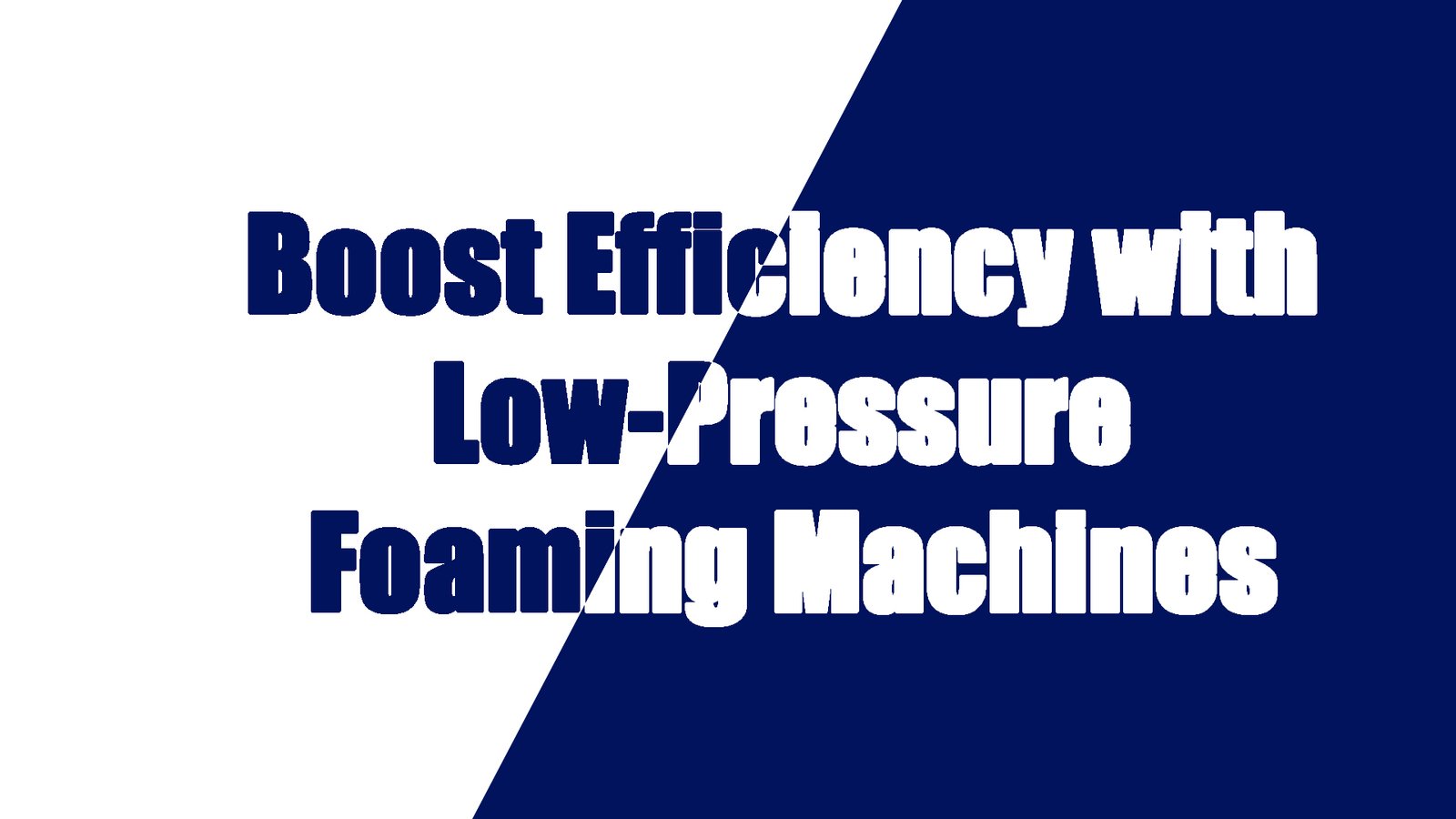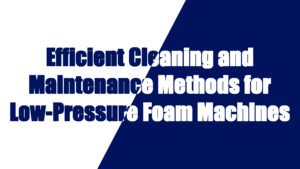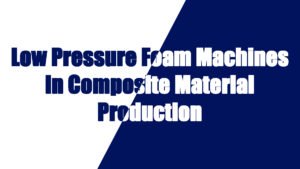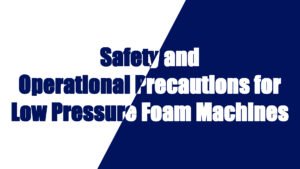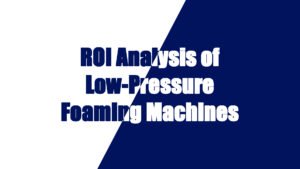Low-pressure foaming machines are essential in the polyurethane foaming industry, widely used in muebles manufacturing, embalaje, construcción materials, automotive interiors, and more. Compared to high-pressure foaming machines, low-pressure systems offer advantages such as cost-effectiveness, simplicity, and suitability for small-scale production. Here, we’ll explore the applications and technical advantages of low-pressure foaming machines, emphasizing their role in various industries.
1. Applications of Low-Pressure Foaming Machines
Furniture Industry
One of the most significant applications of low-pressure foaming machines is in the furniture industry, particularly for products like sofas, mattresses, and soft cushions. The low-pressure system allows for more controlled foam production, ensuring high-density, consistent foams that are ideal for furniture cushioning.
Sofas and Chairs: Low-pressure foaming machines can produce high-quality foam that meets specific comfort and durability requirements. The foam density can be adjusted to achieve the desired softness or firmness, improving user comfort.
Mattresses and Cushions: In the production of foam mattresses and cushions, low-pressure machines can produce the uniformity and consistency of foam required for optimal support. The flexibility of foam density also allows manufacturers to create varying firmness levels based on customer preference.
Cost Efficiency for Furniture Makers: Small and medium furniture manufacturers benefit greatly from low-pressure machines, which offer a more affordable entry point than high-pressure systems. The reduced cost of machinery and raw materials makes low-pressure systems an attractive option for smaller operations that produce foam for a variety of applications.
Packaging Industry
Low-pressure foaming machines also find widespread use in packaging solutions, particularly in foam-in-place packaging, which is ideal for fragile and irregularly shaped products. These systems offer:
Customization: Low-pressure systems enable precise control over foam properties, such as density and viscosity, essential for creating custom molds that fit the product perfectly. This leads to better cushioning, reducing product damage during transport.
Material Efficiency: The ability to control foam expansion and density helps reduce material waste and ensures that the exact amount of foam is used, providing cost-effective solutions for manufacturers.
Construction Industry
In the construction industry, low-pressure foaming machines are commonly used to produce insulating materials, especially for applications like spray foam insulation, roofing, and wall insulation. They provide:
Energy Efficiency: Low-pressure foam insulation contributes to better energy efficiency by filling gaps and voids in building structures. The foam expands upon application, forming an airtight seal that improves thermal insulation.
Ease of Application: The simplicity of low-pressure foaming machines makes them highly effective for onsite installations, offering flexibility and ease of use for insulation contractors working on building projects.
Automotive Industry
Low-pressure foaming technology has found increasing use in automotive manufacturing, particularly for producing components such as car seats, headrests, and armrests. These components require foam that is both durable and comfortable, and low-pressure machines offer:
Cost-Effectiveness: For automotive manufacturers, low-pressure systems provide a more affordable option to produce foam parts for interior components. They offer the flexibility to create varying densities and hardness levels depending on the application, contributing to greater comfort and durability.
Reduced Waste: Low-pressure systems can control foam expansion, ensuring that there is minimal waste during production. This results in cost savings and more environmentally friendly production processes.
2. Technical Advantages of Low-Pressure Foaming Machines
Cost-Effectiveness
One of the main reasons manufacturers choose low-pressure foaming machines is their lower initial investment cost. These machines typically require less upfront capital compared to high-pressure systems, which makes them an attractive option for small- to medium-sized businesses or those starting new operations. Furthermore, their simplicity in design and operation reduces the need for specialized labor and maintenance, cutting down on operating costs.
Simplicity and Flexibility
Low-pressure foaming machines are easier to operate and maintain than their high-pressure counterparts. With fewer components and a less complex control system, these machines are suitable for a wide range of applications, from basic foams to more complex formulations. Manufacturers can easily adjust the foam density, viscosity, and curing time, allowing for flexibility in meeting the specific requirements of various products.
Uniform Foam Quality
Low-pressure systems provide consistent and uniform foam quality. This consistency is crucial in industries like furniture and packaging, where the foam’s physical properties—such as density, elasticity, and resilience—must meet specific standards. The low-pressure approach ensures that foam is produced without the turbulence that can affect higher-pressure machines, making it easier to control and achieve the desired foam characteristics.
Reduced Material Waste
Low-pressure foaming systems allow for more precise control over the amount of foam produced. This minimizes overproduction and material waste, as the foam is created to fill the required spaces without excessive expansion. This not only results in more economical material usage but also helps in reducing the environmental impact by minimizing waste and reducing the overall carbon footprint of the manufacturing process.
Ease of Integration
The low-pressure foaming machine can be easily integrated into existing production lines without significant modifications. This makes it an attractive option for businesses looking to upgrade their equipment or expand their production capabilities. With the ease of installation and fewer technical requirements, businesses can quickly adopt these machines to enhance production processes.
Environmental Benefits
PU Low-pressure machines are often more environmentally friendly compared to high-pressure systems. Since they operate at lower energy consumption levels, they produce fewer emissions and consume less power during operation. Additionally, when paired with eco-friendly raw materials and foaming agents, such as water-based or natural-based foam, the environmental impact of low-pressure systems can be significantly reduced.
Low-pressure foaming machines are versatile, cost-effective, and ideal for a variety of industries, from furniture and packaging to automotive and construction. Their ability to produce consistent, high-quality foam while offering flexibility and cost savings makes them an essential piece of equipment for manufacturers aiming to optimize production processes. As the demand for energy-efficient and environmentally friendly solutions grows, low-pressure systems will continue to play a pivotal role in shaping the future of the foaming industry.
With applications spanning multiple sectors and technical advantages like reduced waste, enhanced production efficiency, and ease of operation, low-pressure foaming machines will remain a preferred choice for many manufacturers.


















